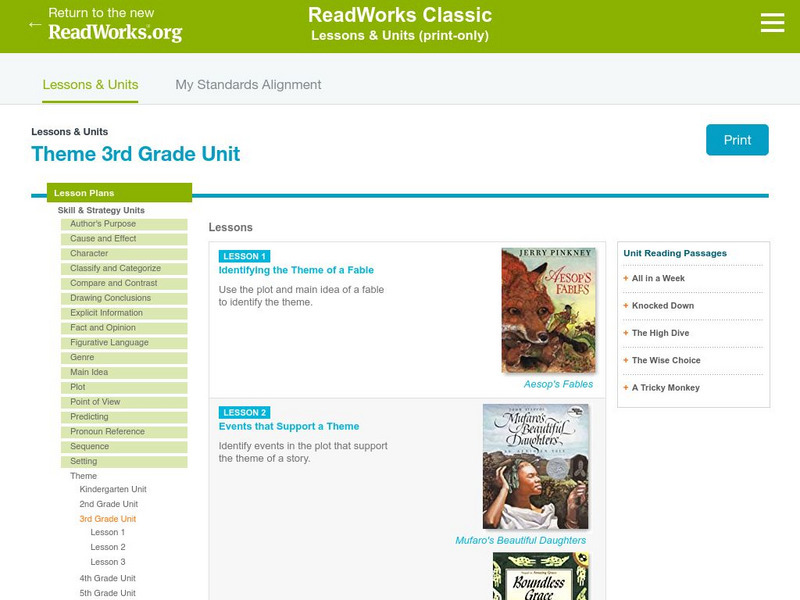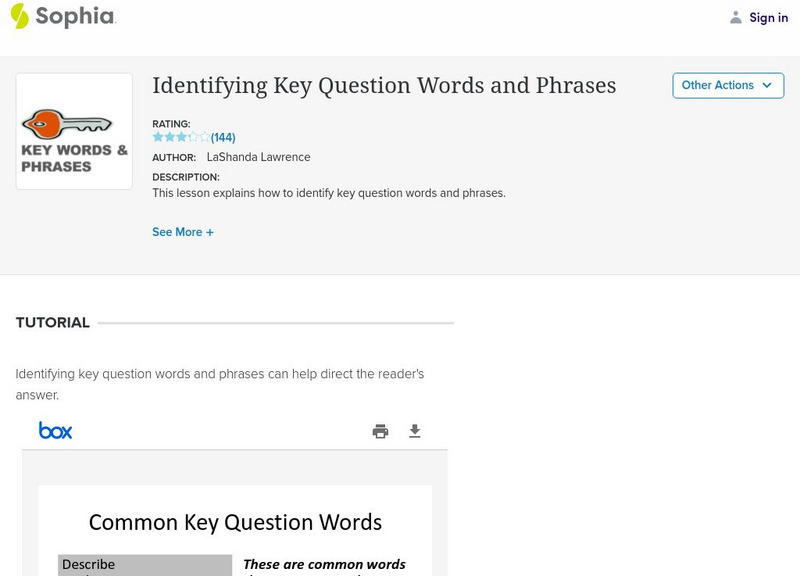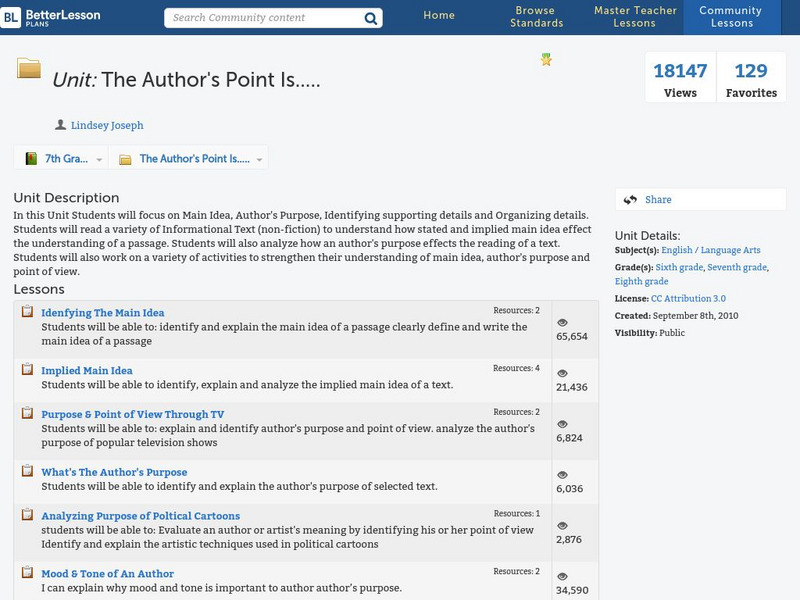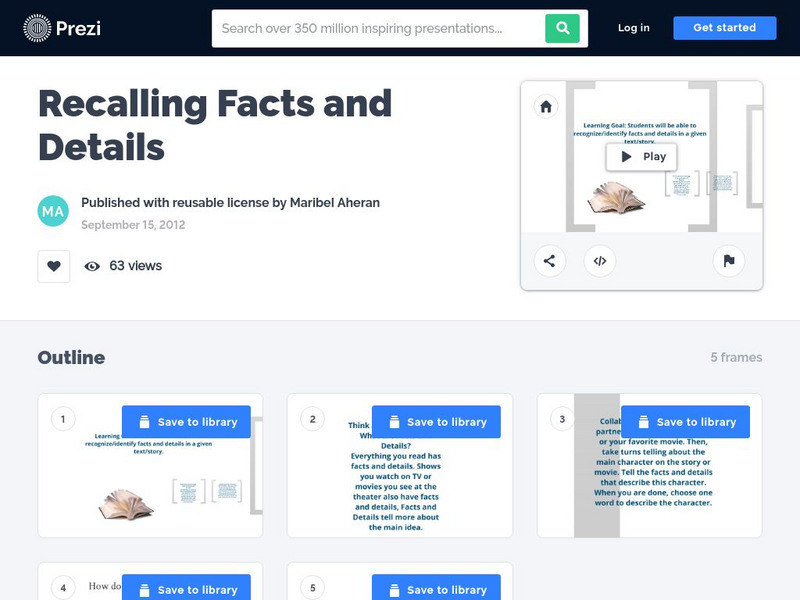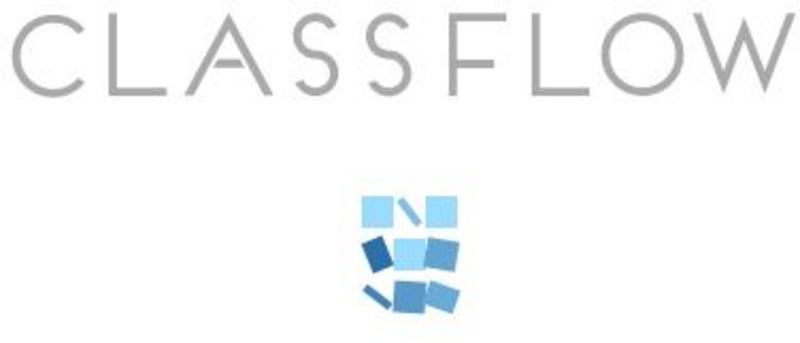Read Works
Read Works: Theme 3rd Grade Unit
[Free Registration/Login Required] This site provides a series of three lesson plans designed to teach students to identify and support the theme of a fable and a fiction selection based on main idea and supporting details. Lessons are...
E Reading Worksheets
E Reading Worksheets: Text Structure Worksheets
This site provides several assignments and graphic organizers related to identifying text structures. Analyzing the following types of text structures are provided: main idea and supporting details; cause and effect; chronological order;...
Sophia Learning
Sophia: Identifying Key Question Words and Phrases
This lesson explains how to identify key question words and phrases. This tutorial lesson shares a short slideshow with the lesson's content.
Other
Ccss Literacy E Handbook: Informational Text: Reasons and Evidence in Text
A short explanation of using reasons and evidence as supporting details. Click the link to see a model of how to identify reasons and evidence in an informational text. Click on the Model button on the bottom right to see a model.
Polk Brothers Foundation Center for Urban Education at DePaul University
De Paul University: Center for Urban Education: Community Progress? [Pdf]
"Community Progress?" is a one page, nonfiction passage about three community projects in Chicago; each group saw a problem, decided on a solution, and implemented it. It is followed by constructed-response questions which require...
Other
Reading Quest: Strategies for Reading Comp.: History Frames: Story Maps
This activity will help you teach students chronological order as well as identifying key people and events. Printable worksheets.
Better Lesson
Better Lesson: Unit: The Author's Point Is
Learners will focus on Main Idea, Author's Purpose, Identifying supporting details and Organizing details. Students will read a variety of Informational Text (non-fiction) to understand how stated and implied main idea effect the...
Other
Prezi: Recalling Facts and Details
Slideshow investigates how to identify facts or details in a story.
CPALMS
Cpalms: Buzzing Tails
This video tutorial features the character named Bobby who will assist students as they search for key details in a nonfiction text.
Better Lesson
Better Lesson: Generally Speaking, Generalizations Can Generally Be Confusing
In this instructional activity, 5th graders learn how to identify a generalization in a text so that they can then spot lies or inaccuracies. Includes downloadable workbook with a generalization activity on page 53.
Education Development Center
Tv411: Summarizing: Activity 3
In this activity, students choose the correct category to which details belong. Being able to categorize helps students to identify the difference between main ideas and details.
ClassFlow
Class Flow: Graphic Organizer Spider Graphic
[Free Registration/Login Required] This graphic organizer provides a webbing framework for students to analyze the main idea/theme and supporting details of a reading passage or historical event. A template for students to follow is given.
AdLit
Ad lit.org: Classroom Strategies: Seed Discussion
A Seed Discussion is a two-part strategy used to teach students how to engage in discussions about assigned readings. In the first part, students read selected text and identify "seeds" or key concepts of a passage which may need...
Better Lesson
Better Lesson: The True Story of Christopher Columbus
In this lesson, 5th graders analyze two nonfiction passages on Christopher Columbus to determine facts and author's bias and its influence on the readers.
ReadWriteThink
Read Write Think: Digging Up Details on Worms: Using Science in an Inquiry Study
A lesson plan based on a study unit of earthworms, using the inquiry model to integrate scientific processes with literacy practices. Instruction plans, related resources, and standards are included.
